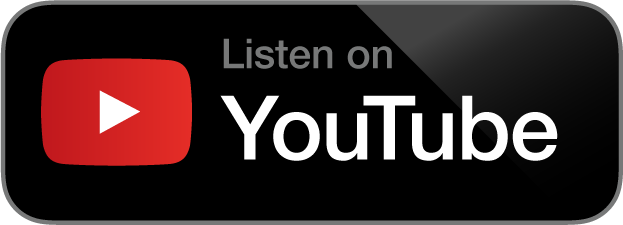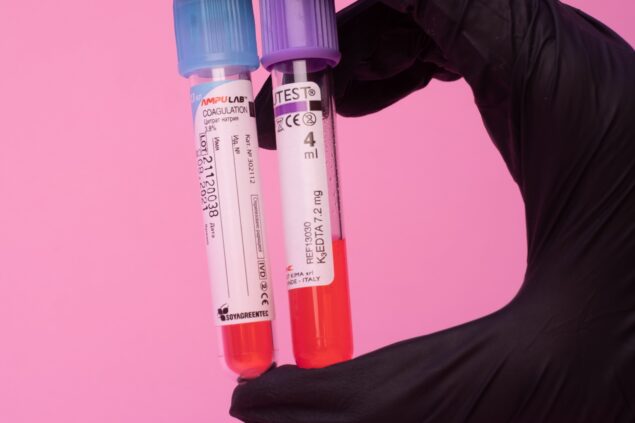Explainer Episode 52 – What Came Next: FDA’s Response to the Reagan-Udall Foundation’s December Reports on FDA’s Tobacco and Human Foods Program

In late February 2023, the FDA released its responses to the December 2022 Reagan-Udall Foundation reports on the FDA’s Human Foods and Tobacco programs.
In this follow-on explainer podcast, we once again host Jeff Stier to discuss what these initial responses include, what issues they address, and what one might want to watch moving forward.
Transcript
Although this transcript is largely accurate, in some cases it could be incomplete or inaccurate due to inaudible passages or transcription errors.
[Music and Narration]
Introduction: Welcome to the Regulatory Transparency Project’s Fourth Branch podcast series. All expressions of opinion are those of the speaker.
Chayila Kleist: Hello, and welcome to the Regulatory Transparency Project’s podcast. My name is Chayila Kleist, and I’m an Assistant Director of the Regulatory Transparency Project here at The Federalist Society. Today, we are delighted to once again host Jeff Stier for a new discussion on “What Came Next: The FDA’s Response to The Reagan-Udall Reports on The FDA’s Tobacco and Human Foods Programs.”
As always, please note that all expressions of opinion are those of the expert on today’s program, as The Federalist Society takes no position on particular legal or public policy issues.
Mr. Stier, thank you so much for being with us today. We really appreciate you taking the time.
Jeff Stier: It’s great to be back for this follow-up discussion.
Chayila Kleist: For our audience, a brief introduction, in case you didn’t listen to the last podcast. Mr. Stier is a senior fellow at the Consumer Choice Center. He is also a senior fellow to the Taxpayers Protection Alliance and a policy adviser to the Heartland Institute. He’s widely quoted in the media and has written on policy health op-eds, The Wall Street Journal, Los Angeles Times, USA Today, The New York Post, The Washington Examiner, Fox News, National Review Online, and has been interviewed by several other news sites.
Additionally, Mr. Stier has testified at state and local legislatures throughout the U.S., at FDA scientific hearings, and at the Office of Management and Budget, and hearings at the United Nations, and in Israel’s Knesset.
Now, while there’s more to say, in the interest of time, I’ll cut my introduction there. But if you’d like to know more about Mr. Stier, you’re welcome to access his impressive full bio at www.regproject.org.
With that, however, we’ll turn to our discussion. Let’s start at the beginning. For those who may not have been aware or haven’t yet had the chance to listen to the last podcast — and here, I’ll quickly plug that to our audience. It really does help lay the groundwork both for this discussion, as well as provide some helpful detail and background, and it’s just an interesting topic. Really briefly, what were these reports?
Jeff Stier: So last summer, the Reagan-Udall Foundation was asked by the FDA’s commissioner, Dr. Robert Califf, to do an independent review about two specific areas of the FDA’s work—not the entire FDA, but two areas that have run into some challenges over the past few years—and that is the FDA’s Food Regulatory Division, which is responsible for some 80 percent of the U.S. food-supply safety, as well as the Tobacco Regulatory arena, which is overseeing regulation of a product, cigarettes, that still cause about 400,000 American deaths every year, and the potential for alternative products—so the FDA’s regulatory approach to tobacco products. And the agency was having some trouble and maybe not performing as well as some people would have liked, and to Dr. Califf’s credit, he sought out an independent review of the agency’s work.
Now the Reagan-Udall Foundation is independent. It was set up by Congress to support the FDA’s mission. It is made up of a lot of former FDA leadership, but it is outside the framework of the FDA itself, so, therefore, it had some level of independence. And the Reagan-Udall Foundation does a lot of work for the FDA—it’s commissioned to do work. But this was a unique type of request in that it was not specific to one scientific issue or one approach. It was a big picture about how the agency is organized in these two particular areas of food and tobacco.
Chayila Kleist: Got it. I really appreciate that broad overview. So these reports were released in December 2022, and at the time, I believe the FDA said it was going to take several weeks to review the reports and look through the recommendations therein, and it did. This last week—as we’re recording this—the FDA came out with its — what, I think, were its initial responses to the reports. Let’s take each in turn, starting with the food report. What was the FDA’s response to what Reagan-Udall had said in their recommendations?
Jeff Stier: Well, the Reagan-Udall’s findings about the FDA’s work in food policy was really not a surprise to anybody. The key problem and the key criticism that the FDA was facing — and it was brought to light, really, in the infant formula shortage that we faced last year, and the FDA’s handling of that issue, which goes to back some contamination and how the plant was shut down and for how long it was shut down and everything surrounding that. The Reagan-Udall report on the FDA found, to nobody’s surprise, that there was a problem with chain of command, that there are different — a lot of different food divisions within the FDA and they don’t all report to the same person—it’s kind of a complex matrix structure—and that critics in Congress, oversight, and both the food industry as well as consumer groups, all pointed to that issue of the organization of food regulation at the FDA. So it was no surprise that the Reagan-Udall report really focused on that and called for reorganization at the food division.
And recently, the FDA responded to that report and seemingly acknowledged the criticism and recognized the need for reorganization of the food regulatory area, but emerging from that response is now interesting criticism over just the last week or so, again, from the food industry, the frozen food product companies, and consumer groups—which are often at odds. They all said, “This is really good that the FDA wants to reorganize.” But the FDA’s reorganization plan that it announced in response to Reagan-Udall kept some food safety work under the Office of Regulatory Affairs at the FDA and separate from this new umbrella—food safety aspect—of the FDA.
So the FDA basically said, “Yeah. We need to reorganize, so we’re all under one chain of command.” But they left an important aspect of that out. And now, what’s happening is that these industry groups and these consumer groups — Consumer Reports even said it. “We may have to go to Congress to get implementation of the recommendations made by Reagan-Udall, rather than a partial reorganization that the FDA has proposed in its response. But they didn’t go far enough, and we’re going to leave — have that same problem. We’re going to really need to go to Congress to tell FDA, ‘This is how you ought to reorganize,’ so there is one chain of command that everyone answers to the same person, and the person who’s in charge of that policy umbrella is ‘the’ person, rather than the problem that we had before.”
There is a concept of a matrix organizational approach, which is often used in corporate America, where it is not one chain of command. And the FDA, Robert Califf, is saying, “Well, we’re going to use this matrix approach. Most of it will be under the same chain of command, except for this part, which will be under the Office of Regulatory Affairs.” And the critics from across the board are saying, “Well, that may work in corporate America, but from a government perspective, we need a chain of command, and that’s what got us into this problem.”
So when it comes to food—as uncontroversial as the Reagan-Udall report seemed to be and unsurprising—what’s emerging now is that the FDA’s response and approach to try to implement the Reagan-Udall report is not complete enough for critics. So we’re going to have to continue to watch that and see whether the FDA responds in kind and says, “Okay. We hear you. We’re going to do it differently,” or whether the threat of congressional oversight — and there’s bipartisan support, I should add, for this in Congress, for a more streamlined approach to the FDA.
So it’ll be an interesting battle. And those of us at The Federalist Society, who enjoy looking at the academic approach—that you might look at it in law school about separation of powers—is really being — there’s a light being shined on that issue right now and how the interplay between an outside report, the regulators — and whether Congress is going to come in and reorganize that agency or whether the agency will do it enough on its own without the need for congressional oversight or congressional implementation of the advice from Reagan-Udall.
Chayila Kleist: Got it. So on the food side, it sounds like there was a pretty clear set of recommendations put forward. There’s some conversation as to how FDA has responded, but the paths forward seem clear.
Let’s turn then to the FDA’s response to the tobacco report. The FDA—or rather, the Center of Tobacco Products, CTP—released its response, which I think lays out the actions it has already taken and the actions it intends to take, at least, in broad strokes — is sort of a response to the recommendations put forward. Starting with a broad assessment—and we can get some of the detail later as to why you think what you think later—as someone who’s been tracking this, someone who’s even involved to some degree as an external expert, who was consulted in the production of that report, how would you characterize FDA’s response? What did they do? How was it expected?
Jeff Stier: So the FDA’s response to really broad-ranging criticism of the Center for Tobacco Products from the Reagan-Udall report, which lambasted the agency for not having a strategic plan, for not being transparent with both consumers and the regulated agency and really — the regulated companies — and really a lack of good communications plan that may be a result of the lack of a strategic plan and the problems that agency had in terms of actual regulatory policy.
Now, the Reagan-Udall mandate on tobacco was to keep it limited to FDA organization and not get into policy criticism of the FDA. But the criticism was so broad, in terms of lacking a strategic plan, that they went — well, made it even seem beyond their mandate, and said, “Your actual regulatory approach has gotten you into so much litigation.” And you could say, “Well, the tobacco industry is litigious.” But in this case, these cases are still going on after all this time. Maybe there’s something to that criticism about a lack of a strategic plan affecting your outcome, your policy.
So the FDA said it would take a few weeks—back in late December, it would take a few weeks—and as is their standard operating procedure, here we are in the beginning of March, and only in very late February did the FDA come forward with some sort of initial response. The joke is, “Well, when the FDA said, ‘It’ll take a few weeks,’ well, that was a few weeks of working days, excluding holidays and government business and all these other things.” So it’s not a surprise that they were a little bit late. They often are.
But the FDA’s response—initial response—was, in part, specific that they are going to do a better job in transparency, a better job of communicating with the public and the regulated industry. Well, saying they will do that is one thing; doing it is another. To the Center for Tobacco Products’s credit, and perhaps planning, on the very day that the agency released its response to the Reagan-Udall report, the head of the Center for Tobacco Products, Dr. Brian King—relatively new in that position; he’s been there for about seven months—held a Q&A session—a public Q&A session—with the independent e-cigarette industry association. So I thought — to his credit, Dr. Brian King did that. Those are some of his strongest critics. So he did hold that open session on the same day they released the response.
In the response, the FDA said, “We’re going to be producing a strategic plan, a five-year plan.” The proof will be in the pudding. It’s good news that, although no surprise, the FDA is now going to come up with a strategic plan. The question is, what will that strategic plan look like? Will it basically rehash what it’s done before? I’m a little bit concerned because what the director said in that meeting was, “Well, I was given — I was given a mandate by Congress, and we’re going to use the best science to come up with that mandate.” And that’s all well and good, but the question is, “Is there going to be a strategic plan?” Are they going to try to accomplish something, or is it just going to be a strategic plan as a repackaging of what they’ve already done, and things will be just the same? We haven’t seen yet what that will be, but at least they’re going to work on the strategic plan.
Other aspects of the Reagan-Udall report, however, will require — as we talked about in the original discussion here, it will require congressional authorization. Some changes the FDA may support. No surprise. They may support an excise tax on new products like e-cigarettes, which will require congressional authorization. But interestingly, the FDA is not seeking any change to the overall approach, and the real key and the real controversy in that overall approach is the premarket tobacco application. And something that Congress called for and put into law is that in order for a product to be considered — to be authorized by the FDA, the FDA has to find, in its review of a premarket tobacco application, that the product is, and I quote, “Appropriate for the protection of public health,” not only for the individual user but for public health broadly—so both for the individual user who might be smoker and stop, as well as public health, writ large. Youth might begin using a product, and you weigh the benefits to smokers quitting completely versus the downside of youth initiation or other potential downsides, and it’s a balancing test. Congress did not give very specific demands beyond that, and companies who put in applications didn’t have any guidance from the FDA.
This was part of the Reagan-Udall criticism that there was no standard. There were no specific studies that the FDA asked for. There were no benchmarks that the FDA wanted to see, and there was no consistency in these applications. The only one standard that the FDA put out was that they wanted to see longitudinal studies about these products. The problem is—and Reagan-Udall pointed this out, as well as we’re seeing it in the litigation playing out right now—that that standard was only announced after the rule—the deeming rule about these premarket tobacco applications became the rule—and only after the deadline to submit applications for those new products, for them to stay on the market. So obviously, that standard, to the extent it’s a standard, was not implemented properly or accurately. So that’s the kind of problem that the Reagan-Udall report pointed to, and that’s the type of thing that I think remains to be seen. How will the FDA remedy that? Can the FDA remedy that?
And what might make sense would be — we see this often. A commissioner of an agency goes to Congress and says, “We need the law changed. The law isn’t working. The standard isn’t right. The rules aren’t clear enough. There’s a lot of litigation. It’s a mess.” And the agency will go to Congress and lobby for a change. What Dr. Brian King said in response to a question during that conference with the vapor’s organization—“Are there problems with the PMTA process, particularly with regard to, how do you define appropriate for the protection of public health?” — he said, “Well, we’re just applying the law, and we’re using the best science.” That’s kind of a pat answer: “That’s the law, and we’re just doing the best job we can using the best science we can.” If the FDA wants Congress to change the law, the FDA will not be shy about lobbying for that change, whereas here, he says, “Well, I’m just dealing with the law that Congress gave us.”
So that’ll be interesting to see in terms of how those types of changes are implemented. And the FDA’s response was—only initial response—they’re setting up all these task forces about how to respond, but it’s going to take time. And the real question is, “Can the FDA make these types of changes itself?” That was the question we discussed last time, and based on the FDA’s initial response, I, personally, am not persuaded that the FDA’s motivated to make the types of changes that the Reagan-Udall report called for on its own. And to me—this is kind of the headline—Congress will need to exercise oversight, and the Reagan-Udall report that was commissioned by the FDA itself was not speaking only to the FDA, it was also speaking to Congress. And while the FDA released an initial response, I think we have yet to hear from Congress about what Congress’s role is in fixing the dysfunction at the Center for Tobacco Products.
Chayila Kleist: Got it. One thing you noted in our last podcast that you were surprised to see in the Reagan-Udall Foundation’s report was a lack of a singular emphasis on a need for more money or more staff at the FDA, although both topics were obviously raised. As you now look at what the FDA is proposing in response and the requests it’s making of Congress—because I think there are some requests made of Congress in these initial responses—do you see a request for both of those, and are those requests in line with and paired with responses to the other recommendations made by the Reagan-Udall reports?
Jeff Stier: Chayila, only partially. And that is — while I was surprised, my initial skepticism—and I wrote about this for the Washington Examiner last summer—was, “Hey. I’m a little skeptical. The FDA asked for an independent report from former FDA officials, basically criticizing their own work.” And I thought that this would be a typical Washington example of an agency asking for more funding and more authority. And instead of doing it themselves, which would seem self-serving, they’re going to do it in perhaps a less self-serving way and have somebody else, former FDA officials, make that request. And that’s not what this report was all about. It was really substantial, both on the food side, but especially on the tobacco side—very specific criticisms that go beyond, “Hey. Give them more authority.”
I think the FDA’s response is, “Well, in order to implement these reforms, we’re going to need more money.” And that’s no surprise. And in a way, it is kind of sensible because there is a focus on user fees, which is a common way that the FDA gets its funding. And these user fees, I would distinguish them a little bit from an excise tax. An excise tax or a sin tax is a tax on a product to discourage their use. A user fee is less judgmental, if you will, and says, “Well, if Congress — if FDA is going to regulate these products, we need to be funded to do it. And there will be a fee attached to that.” The reason I make that distinction is because, when it comes to excise taxes or sin taxes, an economist would tell you that the rate of the tax should be commensurate with the level of harm from that sin.
So in the case of tobacco taxes, cigarette taxes are very high because they’re the most dangerous product, and therefore, e-cigarette taxes — e-cigarettes, which are less harmful, should be taxed at a lower rate. That’s not something the government is doing just yet, but the excise tax approach versus the user fee approach, certainly, it makes sense, from a user fee perspective, to cover the regulatory cost of doing that.
What some experts—myself included—would like to see is a more streamlined regulatory approach, a more predictable regulatory approach, so that industry knows what they need to put into an application, and then the FDA could pretty quickly decide, “Is it there or is it not there?” make a decision, and it would be much less expensive to do. So if the FDA wants to cover its expenses for the PMTA process, it might want to keep those expenses down before it goes to Congress to ask for user fees.
Chayila Kleist: Got it. Thanks so much. Turning to both reports and a couple summation questions on them, is there anything you were excited to see at these initial responses that you had not anticipated the FDA addressing or getting to yet?
Jeff Stier: Well, on the food side, I don’t think there was ever any suspense about what the report would say. I am a little surprised that the FDA’s response was not as robust as everyone would have liked to have seen. We’ll see how—as we discussed before—that challenge plays out between industry, consumer groups, and Congress. That, I think, was surprising to me. I wasn’t expecting to see the FDA balk at implementing the Reagan-Udall’s recommendation that there be a single chain of command in terms of authority.
But on the tobacco side, one thing did surprise me. And I often get asked the question by either industry — the vapor industry or, more pointedly, consumers—adult consumers of e-cigarettes, who have quit smoking by using flavored e-cigarettes. And they want — they were hanging some hope the Reagan-Udall report to get FDA focused on the tobacco harm reduction idea, on the idea that we can reduce the harm caused by tobacco—the 400,000 Americans that die every year from smoking cigarettes—and get the FDA to focus on the idea of tobacco harm reduction, of encouraging smokers to switch to lower risk products and completely stop smoking and get their nicotine from these new, innovative technologies, like e-cigarettes or even nicotine pouches, some other form of nicotine rather than the combustible form, which is the far most harmful form.
And the FDA had claimed, probably five years ago, that it was moving in that direction. It set forward a policy idea that we’re going to move people from cigarettes to lower — if they must continue using nicotine, which they shouldn’t, or if they can’t stop using nicotine, we want them to use lower risk alternatives. That was the FDA’s plan, which it says is still in effect. However, that plan hit a road bump, and the FDA claimed that there was an epidemic of youth vaping, and there certainly was an increase in youth vaping. Of course, there was also an increase in youth use of iPhones because iPhones didn’t exist; now they exist, and youth are using them. E-cigarettes didn’t exist; now they exist, and youth are using them. I wish fewer youth would use them, but to say that there’s been an increase in youth vaping since the time e-cigarettes came to market is a little bit misleading.
That being said, I think there is a consensus, youth should not be using these products, and too many were. We could debate over it was an epidemic or not. But Dr. King was criticized for calling it epidemic, especially since youth vaping has declined significantly over the last three or four years. Whether that’s because of COVID, whether that’s because of educational campaigns, whether that’s because they’re no longer as new and novel, that kids need to experiment with them, we don’t know, but the numbers have sharply declined.
Now, the FDA said that the tobacco harm reduction approach, and therefore authorizing premarket tobacco applications for e-cigarettes, hit a road bump, and were about to authorize them, then we saw the so-called epidemic in youth vaping, so we put the brakes on. What was telling to me was, in that phone call that Dr. Brian King had with the industry, he said, “I’ve never called it an epidemic in my seven months, and I’m not going to.” And he acknowledged that youth vaping, while not low enough, has declined dramatically. And if you parse out that language of what he said about, “Yes. Maybe it was an epidemic, but now it’s not, and I’m not going to call it an epidemic, and the numbers have declined,” that suggests, if you read between the lines, that maybe he is prepared to go back to the FDA’s focus on tobacco harm reduction, and that road bump, we have now passed it, and the FDA’s going to continue to encourage less youth vaping and do more to enforce the rules that are already on the books.
But maybe there is some hope that the FDA will be more permissive in authorizing the sale of flavored e-cigarettes to adult smokers, whereas before, the reason it didn’t was because of the epidemic, and now that epidemic has gone down. Maybe we’ll see a change in that.
Chayila Kleist: Well, thank you. Last two questions, and then we can wrap it up. As I understand it, the Reagan-Udall reports were initially put forward, and they were sort of suggestions. They had no teeth. They weren’t legally binding in a particular way since they’re coming from this external organization from the FDA. Now that the FDA itself has spoken, what mechanisms for accountability exist, and if so, how can they be used?
Jeff Stier: Well, that’s really the key question, Chayila. So, as you said, there are no teeth. This was a request made by the FDA. They got the report that they asked for, and now it’s really up to the FDA only, from a legal perspective, to respond. They’ve put forth their responses, and in each case, on the food side as well as on the tobacco side, a lot of outside experts believe that those responses are not complete. And it’s not that the FDA can’t do most of these things. It can, on its own. Some, of course, will require congressional authorization. But interestingly, the FDA has not gone to Congress and said, “Hey. We have a problem. We had this outside report. We need to fix things. We need a congressional change to our authority.”
In fact, on the day that the FDA responded to the tobacco report and put out its plans for finally coming up with a strategic plan, Dr. Brian King, the director of the Center, was asked, “Well, do you think, given that one of the big problems was the FDA’s response to premarket tobacco applications and the general confusion on the appropriate — for the protection of public health standard that’s needed to authorize a product, do you think maybe Congress needs to clarify that?” And Dr. King said, “Well, it’s our authority. We’re going to do it all on our end, and we’re not going to go to Congress. We can’t. It’s Congress. I’m just doing what Congress told me to do,” he said. And that’s very different from what you see frequently, when you see a commissioner say, “Oh. We don’t have the right authority,” or “We need more authority,” or “We need more funding.” And the agency will lobby Congress for those changes.
We’re not seeing that here, which is a bit of a yellow flag to me, suggesting that FDA’s going to try to fix it all on their own. But so far, what we’re seeing from stakeholders, both consumer groups and industry, on both the food side and on the tobacco side, is that the FDA’s response for doing it itself isn’t going to solve the problems. And we’re seeing — at least, on the food side, it looks like there will be some lobbying done to Congress to get those changes made legislatively.
And it’s interesting because that’s one — the food — the need for reform of the FDA’s human food program, which oversees 80 percent of the food we eat, is bipartisan. It’s one of the few areas where I can confidently say there is a bipartisan interest in getting real reform on the food side. So if the FDA doesn’t go far enough in having a single line of authority for everything, then we really may see congressional action, at least on the food side.
On the tobacco side, it’s less bipartisan, but there certainly is a real — I think what the Reagan-Udall report laid bare and what is only reinforced by the FDA’s partial, at best, ‘gobbledy-gook’ response— diplo-regulatory speak response—was that Congress is going to need to, at least, exercise some oversight, if not a full legislative package — to, at least, exercise some oversight over the FDA and its response to the Reagan-Udall report, which, again, was a stinging report. And I think members of Congress are going to want to know, “What will FDA do, and does it need congressional action?” The FDA doesn’t think it does, but what will happen on that front is going to require—in order to get the real changes that Reagan-Udall, I think, pointed out are necessary — is going to require Congress to be proactive rather than waiting for the FDA to come forward and say, “Hey we need to be — we need this all cleared up.”
Chayila Kleist: Got it. Well, thank you. Last question, barring any other comments. Obviously, these are initial responses that, I think — we’re still fairly close to when these responses from the FDA came out. What will be key factors to watch moving forward?
Jeff Stier: Well, the proof will be in the pudding. Right? And that’s not only a reference to food, it’s a reference to, say, the FDA announced that it’s going to begin preparing a strategic plan. Well, what’s going to be in that strategic plan? The FDA has a number of planned regulatory actions coming up in the coming year that I think are going to be quite impactful if they’re moving forward. One of those is a proposed rule to lower nicotine levels in combustible cigarettes to nearly zero. They don’t have the authority to zero out nicotine in the cigarette, but the FDA wants to act within its authority, and it does have the authority to lower nicotine levels in cigarettes. That would be a complete disruption in that market, and if the FDA does not go forward and authorize lower risk alternatives—normal level nicotine levels—and takes away combustible cigarettes as we know them and takes away almost all the nicotine, I think it’s going to lead to an explosion in the illicit market, which is going to be bad for kids vaping. It’s going to be bad for product safety. These lower-risk e-cigarettes are going to now be black market products with no regulation.
And the FDA has only authorized 23 products—23 PMTAs—and they are all currently tobacco flavor; no other flavors that adults like to use. And they are all — especially since an announcement just this week with an Altria investment in one of the leading e-cigarettes, NJOY — all products that have received a PMTA authorization are owned by big tobacco. And I don’t think that’s what some of the public health groups had in mind, and the FDA’s going to have to go further in authorizing flavored products to appeal to adult smokers before it takes away nicotine—almost all of it—from a combustible cigarette.
There’s a logical progression. If you want to lower nicotine levels in combustible cigarettes so that they are no longer addictive—or sustaining an addiction, which is what the FDA said it wants to do—then you’ve got to give those smokers a place to go. You’ve got to give them products that they find appealing, which are flavored e-cigarettes. The market has shown us that. So the FDA’s got its sequence a little bit out of order.
And again, the one positive thing I heard from Dr. Brian King is that we no longer have an epidemic of youth vaping. And if that — that may be a lane that he can go down and say, “Okay. Well, now that there’s no longer an epidemic of youth vaping, we’re going to begin authorizing a range of flavored products so that if we do lower nicotine levels in combustible cigarettes, those smokers will have a place to go.” But these are the kind of questions that I think Congress will need to ask of him in their oversight.
So there’s a lot that can be done, but the FDA’s plan right now, as we see it, from a sequence perspective, in terms of lowering nicotine levels in cigarettes, as well as banning menthol cigarettes outright, without giving adult menthol smokers lower risk menthol products, they’ve got the order all wrong. And if you take away the products before offering them lower-risk alternatives, you are going to stand up an illicit market, and that’s what concerns me. I think that’s what will concern members of Congress in oversight hearings that I hope we’ll see later this year.
Chayila Kleist: Got it. We’ll wrap it there. Mr. Stier, thank you so much for being with us today and sharing your expertise and insight. It’s greatly appreciated.
Jeff Stier: My pleasure.
[Music]
Conclusion: On behalf of The Federalist Society’s Regulatory Transparency Project, thanks for tuning in to the Fourth Branch podcast. To catch every new episode when it’s released, you can subscribe on Apple Podcasts, Google Play, and Spreaker. For the latest from RTP, please visit our website at www.regproject.org.
[Music]
This has been a FedSoc audio production.

Topic
The Federalist Society and Regulatory Transparency Project take no position on particular legal or public policy matters. All expressions of opinion are those of the speaker(s). To join the debate, please email us at [email protected].








